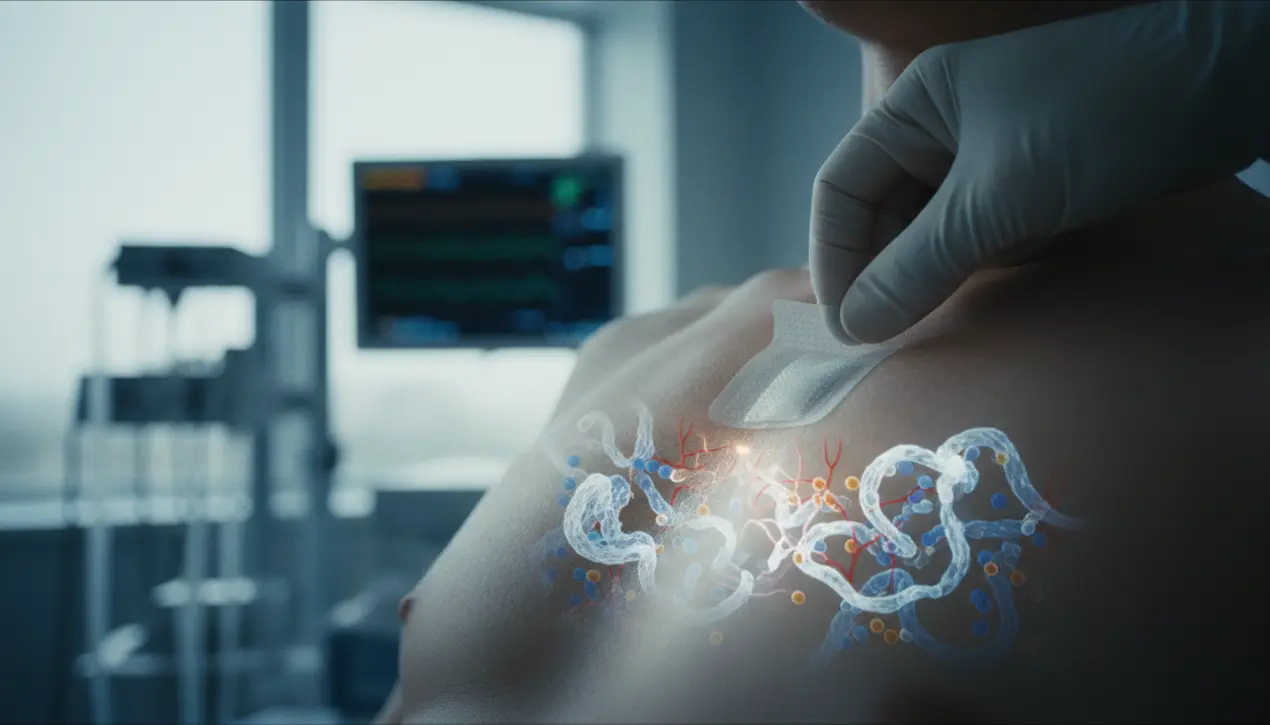
SciencemedicineRegenerative Medicine
Tiny microneedle patch dramatically improves heart attack recovery
KE
Kevin White
2 days ago7 min read3 comments
In a development that reads like a page from a near-future medical thriller, a team of researchers has engineered a dissolvable microneedle patch that promises to fundamentally alter the bleak prognosis following a heart attack. This isn't merely another incremental step in cardiology; it's a paradigm shift in regenerative medicine, leveraging the body's own intricate signaling systems to orchestrate repair from within.The patch, a marvel of bioengineering, is designed to deliver the cytokine Interleukin-4 (IL-4) with surgical precision directly to the ravaged heart tissue. This targeted delivery is the key.Following a myocardial infarction, the body's inflammatory response, while initially protective, often spirals into a destructive cascade. Immune cells, particularly macrophages, flood the area, but they predominantly adopt a pro-inflammatory, 'M1' state that clears debris but also exacerbates tissue damage and promotes the formation of non-contractile scar tissue.This fibrotic scarring is the primary culprit behind the heart's subsequent failure to pump efficiently, leading to chronic heart failure—a condition affecting millions worldwide with limited therapeutic options beyond managing symptoms. What makes this microneedle approach so revolutionary is its ability to reprogram this hostile environment.By saturating the local tissue with IL-4, the patch acts as a biological conductor, cueing the macrophages to switch from their destructive M1 phenotype to a restorative, 'M2' state. These M2 macrophages are the workhorses of healing; they dampen inflammation, clear away dead cells in a more controlled manner, and crucially, secrete factors that promote angiogenesis—the growth of new blood vessels—and facilitate communication between the surviving cardiomyocytes and the vascular network.This enhanced cross-talk is vital for rebuilding a functional, electromechanically synchronized unit, rather than a mere patch of scar. The elegance of this system lies in its localized action, starkly contrasting with the blunt instrument of systemic IL-4 injections, which would circulate throughout the body and carry significant risks of off-target immune effects.The patch itself, likely fabricated from a biocompatible polymer like poly(lactic-co-glycolic acid) or a similar compound, simply dissolves after depositing its payload, leaving no foreign material behind. This minimally invasive nature suggests a future where, post-heart attack, a cardiologist could deploy this patch via a catheter-based procedure, jump-starting the heart's recovery before the patient even leaves the catheterization lab.The implications are staggering. We are moving from an era of damage control to one of active, guided tissue regeneration.The principles at play here—immune modulation and targeted drug delivery—are not confined to cardiology. This platform technology could be adapted to treat a host of other conditions where inflammation and scarring are central, from liver fibrosis and diabetic wounds to even certain neurodegenerative diseases.The work sits at the powerful intersection of immunology, materials science, and bioengineering, a trifecta that defines the next generation of medical breakthroughs. While human trials are the necessary next hurdle, the promise is undeniable: a future where a heart attack is no longer a life sentence of diminished capacity, but an acute event from which the body can genuinely, and robustly, recover.
#featured
#microneedle patch
#heart attack recovery
#IL-4
#targeted drug delivery
#cardiac repair
#medical technology
Stay Informed. Act Smarter.
Get weekly highlights, major headlines, and expert insights — then put your knowledge to work in our live prediction markets.
Related News
Comments
Loading comments...
© 2025 Outpoll Service LTD. All rights reserved.